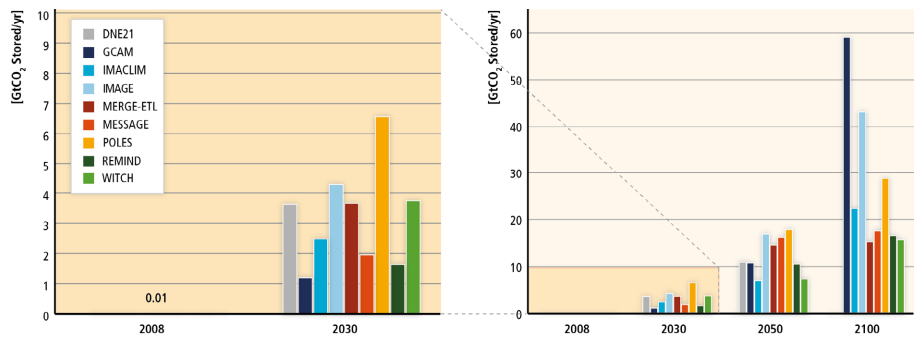Avoiding dangerous climate change is still possible but will cost more than twice as much if we don’t have plenty ofcarbon capture and storage(CCS).
That’s what the Intergovernmental Panel on Climate Changeconcludedearlier this year.
If the world is going to avoid dangerous warming then CCS is probably going to play a pretty important role. The executive director of the International Energy Agency Maria van der Hoeven says it is “essential”. Former UK chief scientist David King hascalled CCS“the only hope for mankind”.
So theopening of the world’s first major power station CCS projectat Boundary Dam in Canada is being hailed as a historic milestone in efforts to tackle climate change.
Boundary Dam is significant because it’s the first commercial scale power station to use the technology, even if CCS is fitted to just one of its generating units.
So where in the world is CCS being developed, and how much carbon will be captured?
We take you around the world in 22 CCS projects that are operational or under construction according to theGlobal CCS Institute.
The current state of CCS
North America has the largest number of CCS projects by far. The US boasts 16 of the 22 operational or under construction schemes and the lion’s share of capture capacity, as the map above shows. We’ve plotted the location and size of the world’s CCS on this map.
The UK doesn’t feature on the map. There are five planned CCS projects in the UK but none has reached the construction phase, let alone started operating. Their progress has beenrockyat best, despite a government pledge of £1 billion in funding.
Only three of the 22 active global projects are power stations. The remainder include nine industrial facilities manufacturing iron or processing tar sands, for instance. Then there are ten projects at natural gas processing facilities.
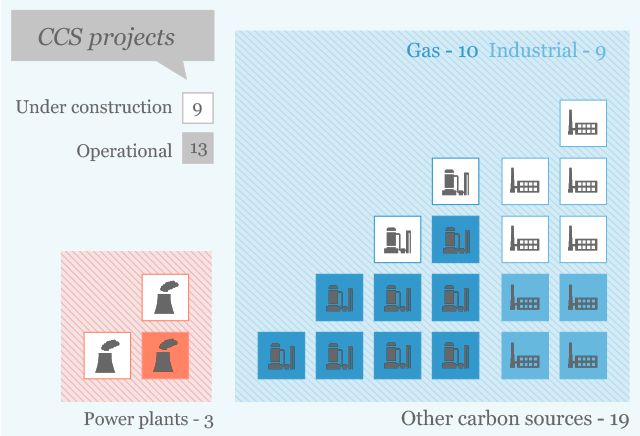
Infographic byRosamund Pearcefor Carbon Brief
Another surprising conclusion is that 16 of the schemes will pump the captured carbon dioxide underground to force more oil out of oil wells. This set-up allows companies to actually make money from capturing carbon rather than it just being a financial burden. But it does raise interesting questions about the net climate impacts.
The Global CCS Institutesaysthese 22 projects will be able to capture 40 million tonnes of carbon dioxide annually, once they are all operational.
What do we need to fight climate change?
Global emissions aredue to reach40,000 million tonnes this year, with nearly 16,000 million tonnes from coal alone.
So these 22 CCS projects – once they are up to speed – will be shaving 0.1 per cent off global emissions each year.
What scale does CCS need to reach if it to play its part in avoiding dangerous climate change? The International Energy Agencythinks that by 2020CCS capacity needs to reach a fairly modest 30 operational projects, capturing over 50 million tonnes. (Goal 1 in the chart below.)
That’s not too ambitious given the项目that are already underway and afurther 34in the planning stages.
But after 2020 the scale of the industry needs to grow rapidly, to capture at least 2,000 million tonnes in 2030 (goal 2 below), the IEA thinks. And it should expand even further to 7,000 million tonnes in 2050 (goal 3).
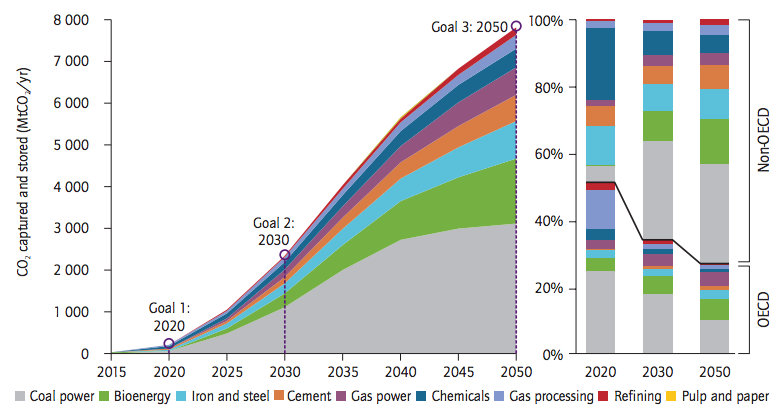
Source: IEACCS technology roadmap 2013
By 2050 the IEA thinks we need a CCS industry capable of capturing 7,000 million tonnes of carbon dioxide per year and storing it underground.
This far exceeds the scale of the world’s oil industry, which extracted 4,133 million tonnes of oil in 2013, according toBP data. Building a global CCS industry to match and then exceed the oil industry will beno small challenge.
There are challenges, too, in theenergy overheadimposed by CCS facilities. Capturing all that carbon, compressing it and injecting it underground uses some of the power that would otherwise have gone to the grid or factory requirements.
The amount of carbon dioxide capture in CCS facilities also grows very rapidly in the most cost-effectiveIPCC scenariosthat are consistent with a two degrees warming target.
It sees capture rates needing to increase at a “remarkable” rate through to 2030 (chart, below left).
It posits a minimum 200-fold increase in CCS capacity by 2030, and the IPCC scenarios see capture capacity grow to around 10,000 million tonnes per year in 2050 (below right) – somewhat higher than the IEA expectation.
The IPCC sees CCS capturing as much as 60,000 million tonnes in 2100 (blue bar, below right), a scale 15 times that of the world’s current oil industry.
Around the world in 22 CCS plants
So let’s take a closer look at where we’re starting from. First up, the three power plant CCS projects:
Boundary Dam, Saskatchewan, Canada

Credit: SaskPower viaFlickr
Last week’s big news relates to the £770 millionBoundary Dam coal CCS projectin Saskatchewan. This is the world’s first major power plant CCS scheme. It is owned by Canadian utility firm SaskPower and will capture 90 per cent of the emissions from a 110 megawatt coal unit that has been retrofitted with CCS technology.
The project will eventually capture 1 million tonnes of carbon dioxide annually from the power station’s chimney. The power station has a number of other coal units where carbon will not be captured – it has a total capacity of 824 megawatts and total emissions are 6.7 million tonnes. With CCS, 15 per cent of the power station’s total emissions will be captured.
Captured gas will be injected into a nearby oil field in order to squeeze more oil out of the ground, a technique called enhanced oil recovery. Any leftover carbon dioxide will be stored in a deep underground salt-water reservoir, called a saline aquifer.
Kemper County, Mississippi, US
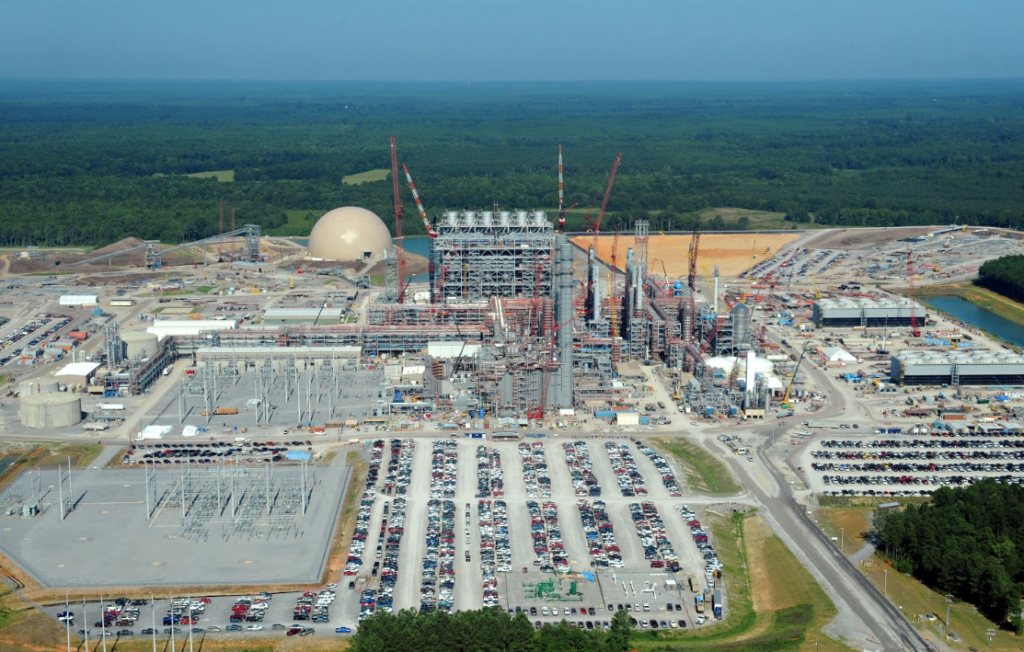
Credit: XTUV0010 viaWikicommons
TheKemper County coal CCSplant in Mississippi will be a completely new power plant using pre-combustion carbon capture. This means it will turn coal into a mixture of hydrogen and carbon dioxide, burning the hydrogen to generate power and capturing the carbon for storage. It’s due to start operating in early 2015. Once it does it will be a fairly chunky 582 megawatt plant but will only capture about 65 per cent of emissions – around 3.5 million tonnes a year. Captured emissions will be used for enhanced oil recovery.
Petra Nova CCS project, Texas, US
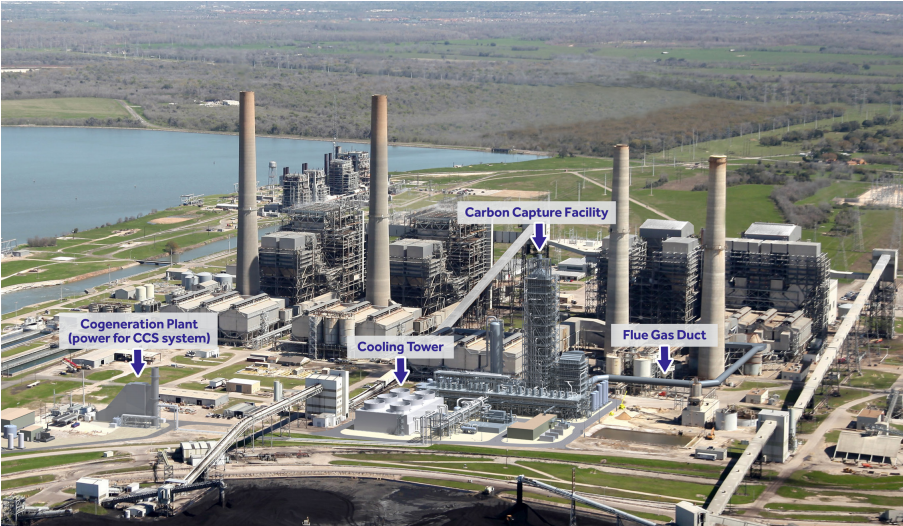
Petra Nova. Credit: NRG Energy
The 3.7 gigawattWA Parish power stationin Texas is getting a partial CCS retrofit that should start operating in 2016. The plant burns coal and gas. About 250 megawatts of the coal capacity will get CCS, reducing emissions by about 1.4 million tonnes a year. The plant currently emits 15.8 million tonnes a year so CCS will cut its emissions by 9 per cent. Captured carbon dioxide will be used for enhanced oil recovery.
Industrial CCS projects
There are nine industrial CCS projects among the world’s 22 active schemes. Some of these are manufacturing sites for fertiliser or steel. Others are processing plants for tar sands or biofuel.
Alberta Carbon Trunk Line, Alberta, Canada
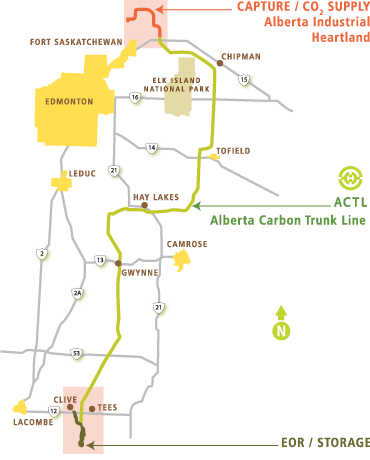
TheAlberta trunk line projectaims to transport captured carbon dioxide from the province’s industrial heartland to boost oil recovery at declining oil fields in central Alberta. The pipeline that will be built to do this will have a capacity of 14.6 million tonnes per year. Two sites – an existing fertiliser plant and a new refinery that will produce oil from tar sand bitumen – are to be the first users of the pipeline, capturing 1.6-2 million tonnes per year from 2015.
Enid Fertilizer, Oklahoma, US
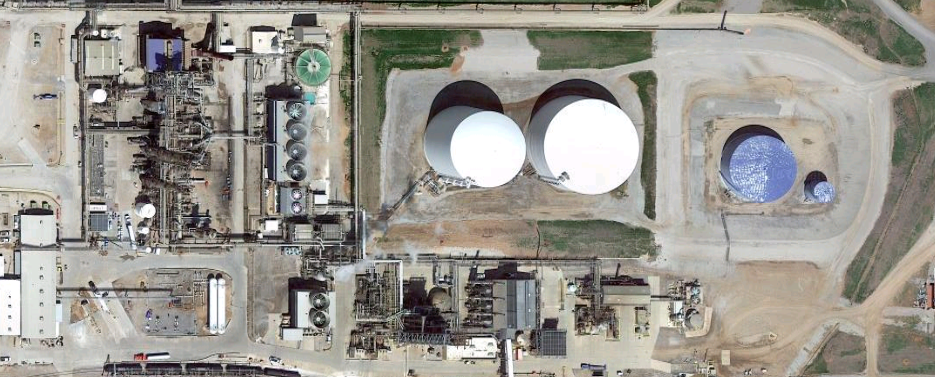
Credit: Google Earth
Since 1982 around 0.7 million tonnes of carbon dioxide a year has been captured from the Koch Nitrogen Company plant in Enid, Oklahoma. Yes, you’ve heard thatnamebefore. The captured gas is used for enhanced oil recovery.
Illinois Industrial CCS Project, Illinois, US

CCS is expected to commence at anexisting biofuel plantin Decatur, Illinois in 2015. The plant ferments corn to produce ethanol for use as a biofuel. Carbon dioxide is a byproduct of the fermentation, like the gas that gives champagne its fizz. It will capture 1 million tonnes a year that will be stored in a saline aquifer, where test injection has been going on since 2011.
Coffeyville Gasification Plant, Kansas, US
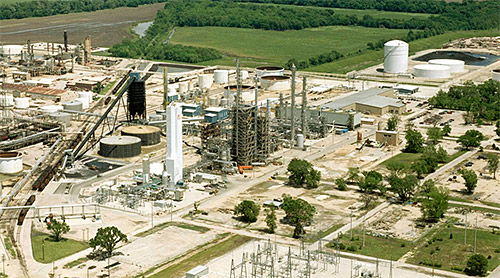
ThisKansas fertiliser plantturns petroleum coke, a coal-like oil refinery by-product, into hydrogen and carbon dioxide. The hydrogen is used to make fertiliser and the carbon dioxide captured for enhanced oil recovery. An estimated 400 depleted oil wells will be brought back into operation as a result. CCS started in 2013 and the plant can capture up to 1 million tonnes a year.
Great Plains Synfuel and Weyburn Midale project, North Dakota/Saskatchewan, US/Canada
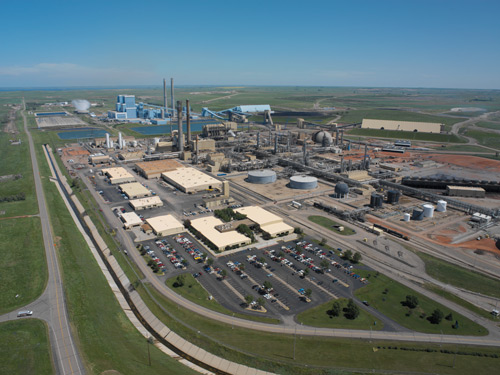
大平原合成燃料解放军nt. Credit: Dakota Gas
TheGreat Plains Synfuel plantin North Dakota turns coal into natural gas, producing carbon dioxide as a byproduct. Since 2000 about half of the gas, some 3 million tonnes a year, is piped across the border to two oil fields in Canada for use in enhanced oil recovery.
Quest, Alberta, Canada
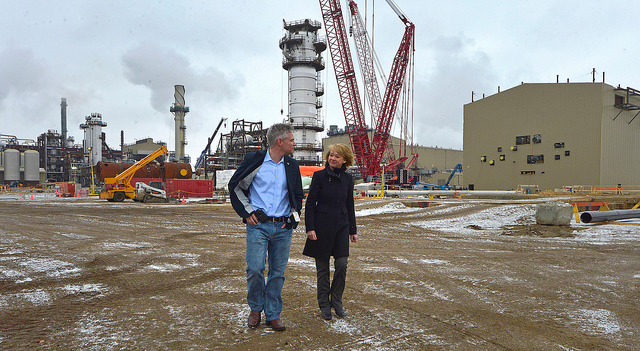
Quest CCS. Credit: Government of Alberta
TheQuest CCS projectis a joint venture between Shell, Chevron and Marathon Oil. It is designed to capture around 1 million tonnes of carbon dioxide from a plant that turns heavy Canadian tar sands into useable products. The £750 million scheme is due to open in 2015 and will reduce site emissions by 35 per cent. Captured carbon dioxide will be stored in a deep saline aquifer.
Air Products Steam Methane Reformer, Texas, US
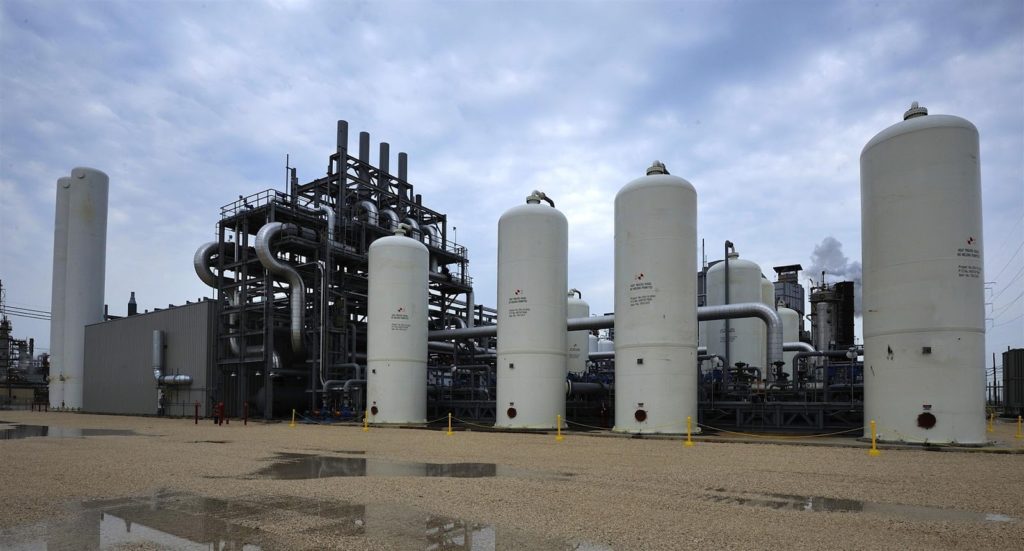
Credit: Air Products
Thisproject是建立在一个炼油厂复杂阿瑟港吗, Texas. Carbon capture started in 2012 at a steam methane reformer facility that turns natural gas into hydrogen. Captured carbon dioxide is being used for oil recovery. At full capacity, 1 million tonnes of carbon dioxide will be captured per year. However, the site’s total emissions increased to 2.7 million tonnes in 2013 against 2.5 million tonnes a year earlier despite the start of capture activities, data reported to the US Environmental Protection Agency show.
Abu Dhabi CCS Project, United Arab Emirates
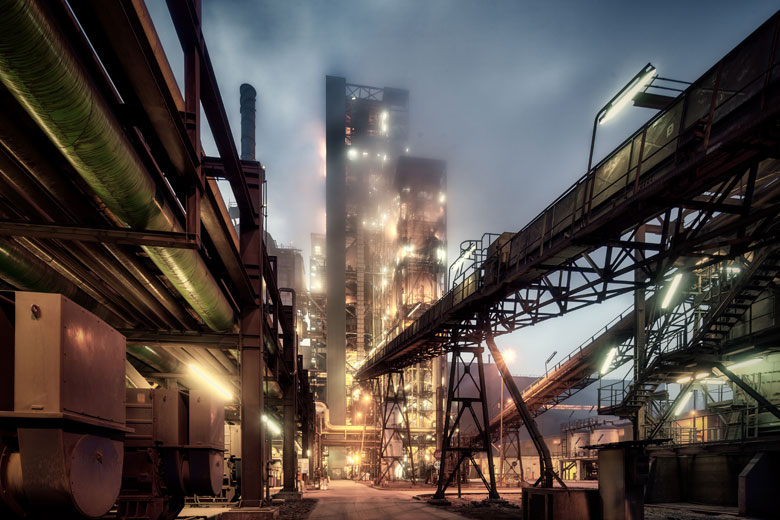
Credit: Emirates Steel
TheEmirates Steel Factoryin Abu Dhabi will capture 0.8 million tonnes a year from 2016 and use it for enhanced oil recovery. The carbon dioxide is a product of the steel production process and is currently emitted to the atmosphere.
Gas processing CCS projects
Ten of the world’s 22 active CCS projects are at sites that strip carbon dioxide naturally contained in natural gas coming out of production wells. This step is required if the gas is to be burned. Nine of the ten make a virtue of this necessity by selling the carbon dioxide for enhanced oil recovery.
Century Plant, Texas, US
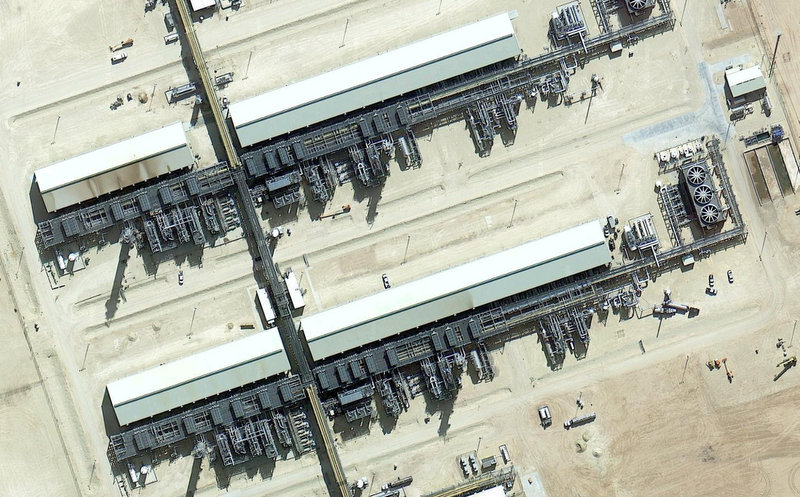
Credit: Google Earth
This Texasnatural gas processing facilityowned by Occidental Petroleum started CCS activity in 2010. The Century plant has the capacity to capture 8.4 million tonnes of carbon dioxide a year, the single largest CCS facility in the world. Actual capture rates are likely to be lower because the US shale revolution has cut demand for the plant’s more expensive processed natural gas.
Lost Cabin Gas Plant, Wyoming, US
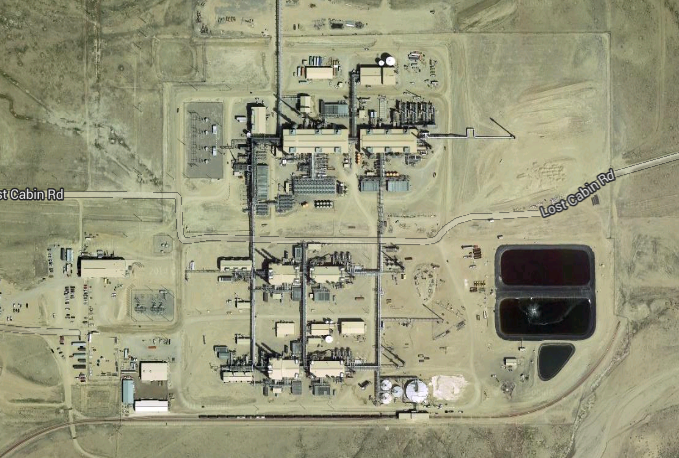
Credit: Google Earth
This is aprocessing facilitythat strips carbon dioxide from natural gas. It started operation in 1995 but only began CCS in 2013. It will capture about 0.9 million tonnes per year for enhanced oil recovery.
Shute Creek Gas Facility, Wyoming, US
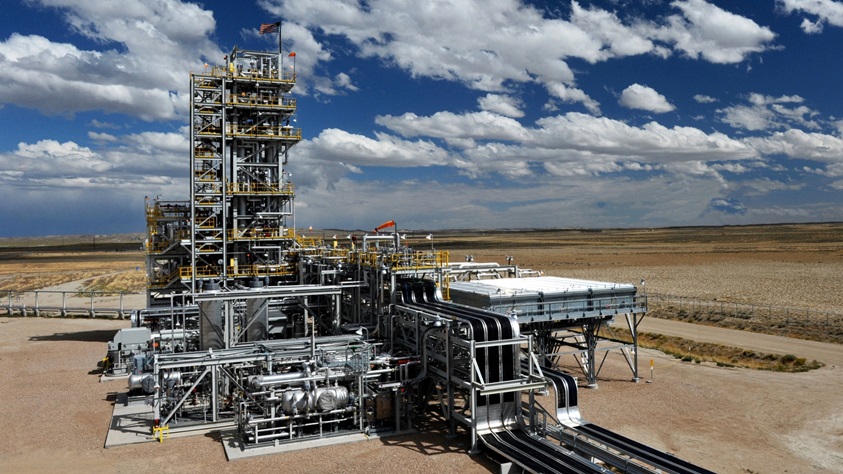
Credit: ExxonMobil
ExxonMobil’sShute Creekgas processing plant started CCS activities in 1986. It takes natural gas that contains a high proportion of carbon dioxide, which is separated for use in enhanced oil recovery. Capture capacity is a chunky 7 million tonnes a year.
Val Verde Gas Plants, Texas, US
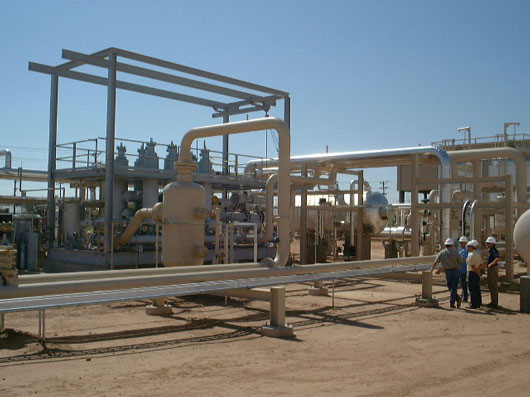
Credit: CO2 Norway
Capture began at a series of natural gas processing plants inVal Verde, Texasin the early 1970s, with the carbon dioxide going to enhanced oil recovery projects by pipeline. Capture capacity is 1.3 million tonnes a year, though this is expected to fall as some of the feeder plants are closing.
In Salah, Algeria
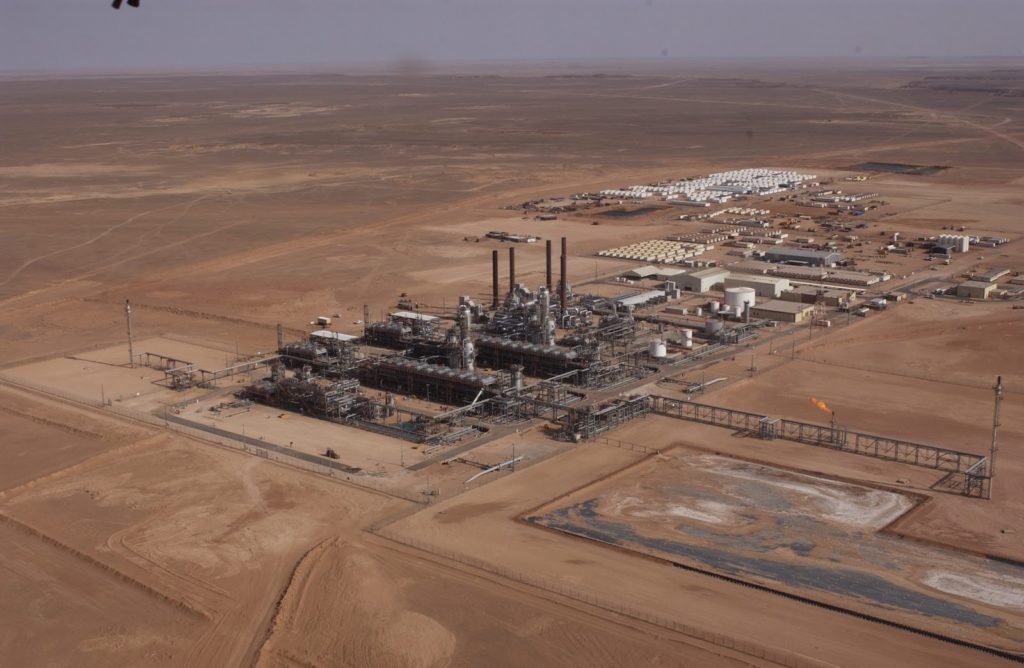
Credit: Statoil
Thisgas processing plantbegan stripping and storing carbon dioxide from natural gas in 2004. Capture was suspended in 2011 as there had been concerns aboutpossible leakage. At that point, 3.5 million tonnes had been stored in a saline aquifer. Monitoring continues at the site and future storage is under review.
Gorgon Injection Project, Australia
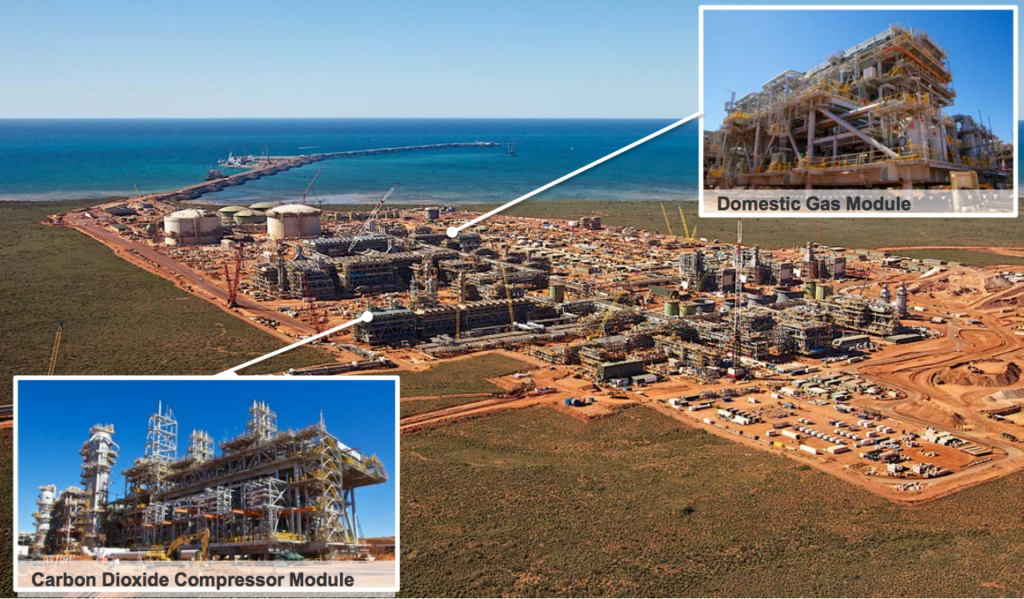
Credit: Chevron Australia
This will be anothergas processing plant, stripping out carbon dioxide from natural gas at Barrow island off the coast of Western Australia. It will capture 3.4-4 million tonnes starting from 2016. The captured carbon dioxide will be stored in a saline aquifer.
Sleipner, Norway
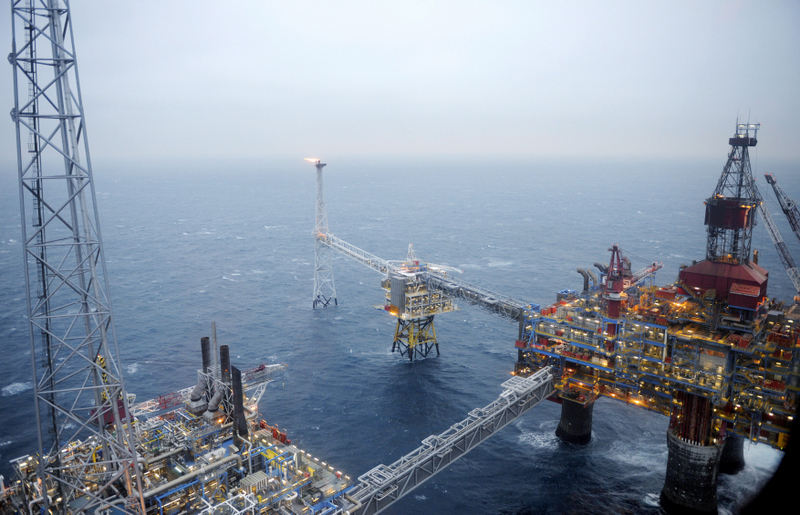
Credit: Statoil
TheSleipner facilityin the North sea is frequently mentioned as an example of an active CCS project, as it has been operating since 1996. It has a capture capacity of 0.9 million tonnes per year and uses a saline aquifer for storage. The scheme removes carbon dioxide from natural gas and is driven by Norway’s tax on CO2. It has injected about 15 million tonnes in total since it started operation.
Snøhvit, Norway
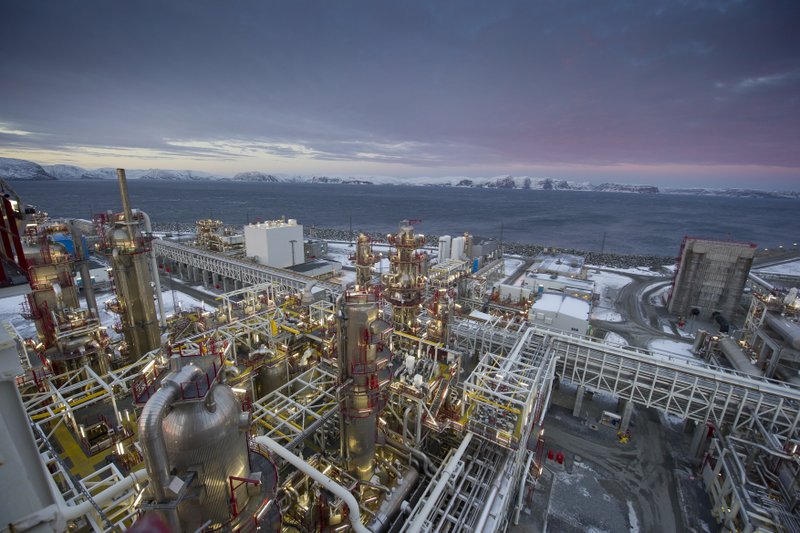
Credit: Statoil
TheSnøhvit project在离岸天然气公关也捕捉二氧化碳ocessing facility, this time in the Barents sea. CCS activity commenced in 2008 and the capacity is 0.7 million tonnes per year. Like the Sleipner project it uses a saline aquifer for storage.
Uthmaniyah Demonstration Project, Saudi Arabia
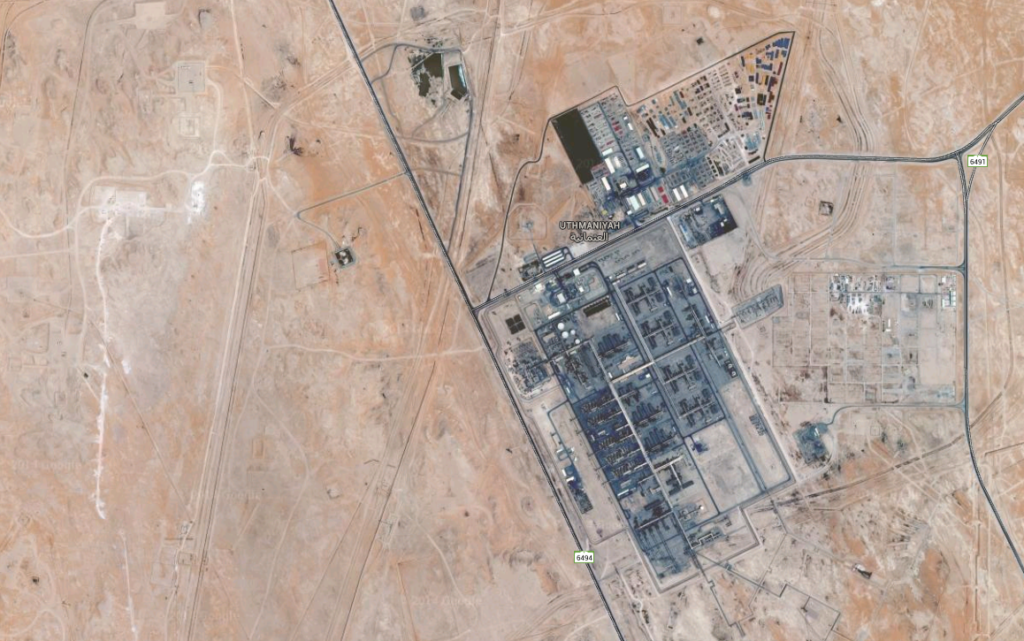
Credit: Google Earth
This demonstration project atUthmaniyahin Saudi Arabia will capture 0.8 million tonnes of carbon dioxide from 2015 for use in enhanced oil recovery at the world’s largest oil field, Ghawar. Capture is from a natural gas processing facility.
Petrobras Lula Oil Field, Brazil
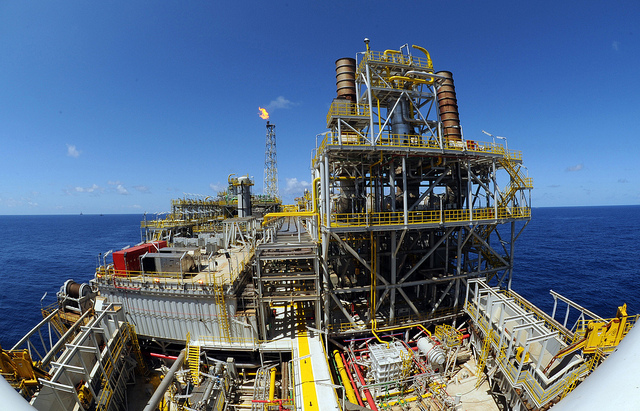
Credit: Programa de Aceleracao do Crescimento
This is anoffshore oil and gas fieldoff the southern coast of Brazil. Since 2013, around 0.7 million tonnes per year of carbon dioxide stripped from the gas is being pumped back into the production reservoir to enhance oil recovery.


